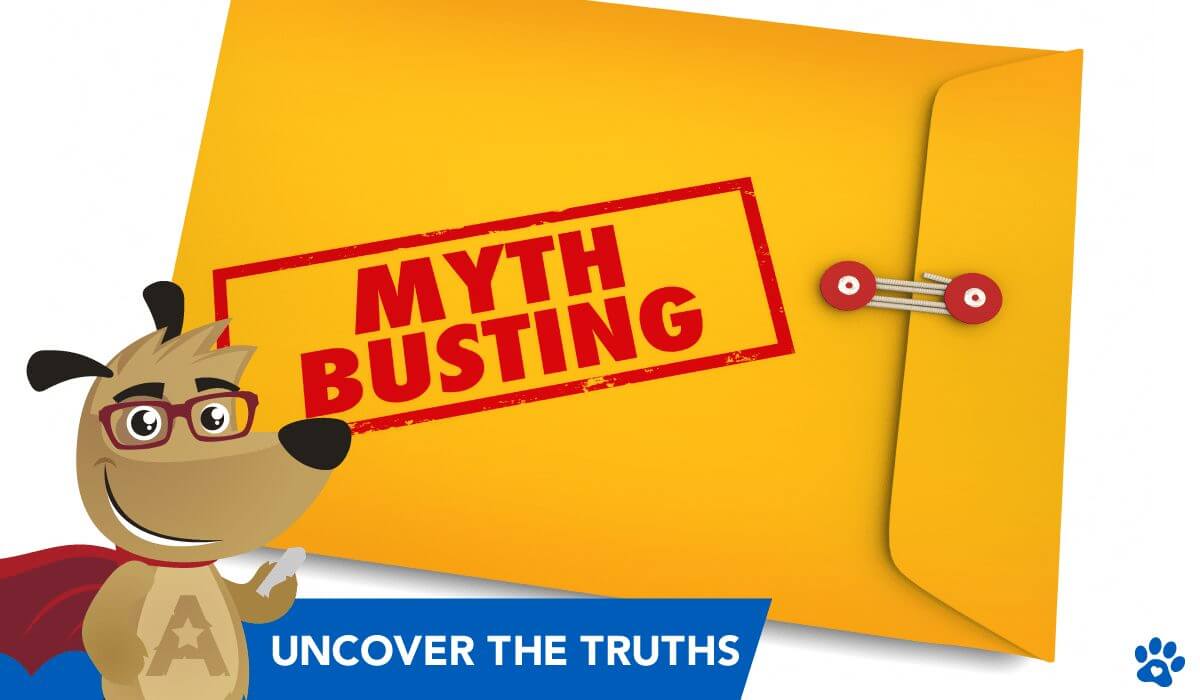
America’s #1 Rated Reverse Lender

 |
ARLO™REVERSE MORTGAGE
ASSISTANT |
Fact vs. Fiction: Debunking 6 Myths About Reverse Mortgages
 |
Michael G. Branson, CEO of All Reverse Mortgage, Inc., and moderator of ARLO™, has 45 years of experience in the mortgage banking industry. He has devoted the past 20 years to reverse mortgages exclusively. (License: NMLS# 14040) |
 |
All Reverse Mortgage's editing process includes rigorous fact-checking led by industry experts to ensure all content is accurate and current. This article has been reviewed, edited, and fact-checked by Cliff Auerswald, President and co-creator of ARLO™. (License: NMLS# 14041) |
Unmasking Reverse Mortgage Myths: Separating Fact from Fiction
Reverse mortgages are often misunderstood, clouded by myths discouraging homeowners from exploring their benefits. These misconceptions create unnecessary doubts for those who might find this financial tool a valuable asset in retirement.
In this guide, we’ll address six of the most common myths about reverse mortgages, providing clear, factual insights to help you make informed decisions. You’ll learn how reverse mortgages work, who can benefit most, and why they’re not the financial pitfalls some claim them to be.
Whether you’re considering a reverse mortgage yourself or just want a better understanding of how they operate, this article is here to provide clarity and confidence. Let’s separate the facts from fiction and shed light on the truths that could reshape your view of this often misjudged option.

Myth #1: Reverse Mortgages Are Only for People in Financial Distress
Truth: Reverse mortgages aren’t just a “last resort.”
While reverse mortgages have historically been seen as a lifeline for homeowners with no other options, that perception is outdated. These loans can be a proactive financial tool for anyone looking to make the most of their home equity. As MetLife noted in their study, “Using home equity as more than a ‘last resort’ can help to keep cash shortfalls from becoming big problems.”
Rather than waiting until finances are strained, homeowners can use reverse mortgages to improve their quality of life, maintain independence, or handle unexpected expenses. For example, funds from a reverse mortgage can help pay for home repairs, property taxes, or even in-home care—giving homeowners the resources they need to age in place comfortably.
In some cases, reverse mortgages can even stabilize financial challenges, such as preventing foreclosure or bridging temporary cash flow gaps, giving homeowners time to find longer-term solutions. By viewing reverse mortgages as a strategic option rather than a last resort, retirees can unlock their home’s potential while maintaining control of their financial future.
Myth #2: The Bank Takes Your Home
Truth: You remain the owner of your home!
One of the most persistent misconceptions about reverse mortgages is the idea that you lose ownership of your home to the bank. This is simply not true. When you take out a reverse mortgage, you retain the title to your home—it remains yours, just as it would with a traditional mortgage.
A reverse mortgage allows you to access your home’s equity in the form of a loan, but ownership stays in your name. The loan is typically repaid when you sell the home, move out, or it becomes part of your estate after passing. The bank does not “take” your home automatically or gain ownership through the loan.
The reverse mortgage is structured to protect homeowners, giving you financial flexibility while ensuring you maintain control of your most valuable asset—your home.
Myth #3: A Reverse Mortgage Will Disqualify You from Government Benefits
Truth: Most benefits, like Medicare and Social Security, are unaffected!
One common concern is that taking out a reverse mortgage might make you ineligible for government programs. The good news? Reverse mortgages won’t impact your Medicare or Social Security benefits, as these programs are based on age or work history—not financial need.
However, needs-based programs like Medicaid or Supplemental Security Income (SSI) could be affected if you don’t manage reverse mortgage proceeds carefully. These programs consider your assets when determining eligibility, so large, unspent reverse mortgage funds in your bank account might temporarily disqualify you.
The rules can vary by state, so if you receive Medicaid or SSI benefits, it’s essential to consult with an expert or your state agency to understand how a reverse mortgage might influence your eligibility. With the right planning, you can often maintain your benefits while accessing your home’s equity.
Myth #4: Reverse Mortgages Are Too Expensive
Truth: Reverse mortgages don’t have to break the bank.
A common critique of reverse mortgages is their cost, but the reality is more nuanced. While there are fees associated with these loans, they can be more manageable than many people think—especially with federally insured options like the Home Equity Conversion Mortgage (HECM).
The HECM program helps keep costs reasonable by setting transparent and standardized fees. Borrowers pay an upfront Mortgage Insurance Premium (MIP) of 2% of the home’s value and a small annual premium of 0.50% of the loan balance. These costs provide important protections, ensuring the loan is non-recourse, meaning neither you nor your heirs will owe more than the home’s value when the loan is repaid.
Another benefit is that many of the upfront costs, including origination fees, can be financed through the reverse mortgage itself, reducing or eliminating out-of-pocket expenses. In some cases, depending on market conditions, you might even find $0 closing cost options, making the loan even more affordable.
Reverse mortgages, like any financial tool, aren’t free—but with the right planning and understanding, they can offer significant value without overwhelming costs.
Myth #5: Reverse Mortgages Will Drain All Your Equity
Truth: You have control over how much equity you use.
A common concern is that reverse mortgages will consume all of a homeowner’s equity, leaving little for the future or for heirs. While this is possible in certain cases, it doesn’t have to be the outcome. Borrowers have several tools to manage their equity and balance their financial needs.
Borrowers can make voluntary interest payments during the loan term to reduce the overall balance and preserve their equity. This option is entirely flexible—you’re never required to make payments, but it’s a great strategy if you’re concerned about the interest accruing on your loan.
To help borrowers plan effectively, All Reverse Mortgage, Inc. offers an exclusive amortization calculator. This tool lets you see how making even small monthly payments can prevent your loan balance from rising and keep more of your equity intact. Plus, interest paid on your reverse mortgage may be tax-deductible, so consult your tax advisor to explore this potential benefit.
With careful planning and the right tools, reverse mortgages can provide financial flexibility without depleting all of your home equity.
Myth #6: Reverse Mortgages Will Trap You in Your Home
Truth: Reverse mortgages give you the freedom to stay—or move—on your terms.
One of the most persistent misconceptions is that reverse mortgages lock borrowers into their homes. In reality, reverse mortgages are designed to provide flexibility, not restrictions. Borrowers remain free to repay their loans anytime, whether through personal funds, refinancing, or selling the home.
If life circumstances change—such as needing to transition to a care facility—you can leave your home, though the reverse mortgage must be repaid at that time. Typically, this repayment comes from the proceeds of selling the home, ensuring a smooth transition without financial entanglements.
For those concerned about upfront fees or unsure how long they’ll remain in their home, a HECM reverse mortgage offers a safe and flexible option. If your home’s value has increased significantly since taking out the reverse mortgage, you can also consider refinancing to access more equity or take advantage of improved interest rates.
Rather than trapping you, reverse mortgages empower you to make decisions based on your needs and circumstances while offering the stability to stay in your home for as long as it suits you.
Reverse Mortgage Myths vs. Truths
| Myth | Truth |
|---|---|
| 1. Only for financial distress | Not just a last resort—used proactively to enhance retirement, fund repairs, or maintain independence. |
| 2. The bank takes your home | You keep ownership; the bank doesn’t take your home—it’s a loan against your equity. |
| 3. Disqualifies government benefits | No impact on Medicare or Social Security; careful planning needed for Medicaid/SSI eligibility. |
| 4. Too expensive | Costs are manageable with HECM; fees can be financed, and some options offer $0 closing costs. |
| 5. Drains all your equity | You control equity use; voluntary payments and tools like ARLO’s calculator help preserve it. |
| 6. Traps you in your home | Offers flexibility—stay or move on your terms; repay anytime via sale, refinance, or funds. |
Top FAQs
Do people regret getting a reverse mortgage?
Why do reverse mortgages have a bad reputation?
Do people lose their homes with a reverse mortgage?
Can someone get a reverse mortgage if they owe on their home?


 Michael G. Branson
Michael G. Branson Cliff Auerswald
Cliff Auerswald

Have a Question About Reverse Mortgages?
Over 2000 of your questions answered by ARLO™
Ask your question now!